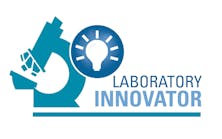Greiner Bio-One, provider of specialized products for the cultivation and analysis of cell and tissue cultures, as well as microplates for high-throughput screening, has developed 96 well microplates with a 3D epoxy surface in collaboration with its longstanding cooperation partner PolyAn. The 3D epoxy surface enables covalent binding of proteins, peptides, DNA, and oligonucleotides. The three-dimensional functional matrix allows the development of covalent binding of nucleophiles to the plate surface without complex coupling chemistry. The structure of the matrix, which has a thickness of up to 50 nm, also reduces unspecific binding to a minimum.
The three-dimensional epoxy 96 well microplates are used mainly if adsorptive binding of peptides or oligonucleotides, for example, to high/medium binding surfaces, is ineffective, or the binding strength is not sufficient. Areas of application include detection methods such as ELISA, ELI-Spot, protein and peptide arrays, and DNA binding.
The 3D epoxy surface is chemically and mechanically highly robust and features particularly homogeneous surface functionalization. The microplates with a 3D epoxy surface are free of detectable DNases and RNases. The shelf life at room temperature is two years. Learn more about Greiner Bio-One 96 well plates.




